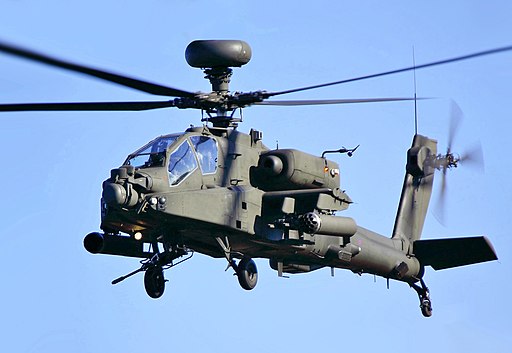Stepping into the hangar, the sight of the AH-64 Apache immediately captures attention: a mechanical marvel bristling with cutting-edge technology and weaponry. But what often goes unnoticed by the layman is the sheer amount of maintenance, inspection, and labor that ensures that this formidable helicopter remains flight-ready.
A Tangle of Systems
At first glance, the Apache might seem like a singular entity, but it’s more akin to a complex jigsaw puzzle. Multiple systems interact seamlessly to provide the helicopter with its renowned combat capabilities. These systems range from the rotor and propulsion system to the Target Acquisition Designation Sight/Pilot Night Vision Sensor (TADS/PNVS), all needing regular checks and balances.
Every system possesses its unique set of challenges. The propulsion system, for instance, requires rigorous inspections to ensure there are no minute cracks or damage. At the same time, the intricate electronics of the TADS/PNVS necessitate constant calibration and software updates.
The Continual Task of Wear and Tear
Though built for resilience, the Apache isn’t immune to the ravages of time and operational wear. Like a sports car taken out for a spin on rough terrains, the frequent take-offs, landings, and high-G maneuvers in the Apache exert considerable stress on its structural components. Vibrations, G-forces, and exposure to diverse environments contribute to wear and tear.
Thus, maintenance crews operate in cycles of preventive and corrective maintenance. They replace time-sensitive parts, ensuring that components do not fail in the field. This proactive approach is pivotal. Waiting for an element to fail, especially in combat, could have dire consequences.
The Dance of Calibration
The Apache’s myriad sensors and systems require frequent calibration. Think of it as tuning a grand piano; even a slight detuning can significantly affect performance. Regular recalibrations are essential given the Apache’s reliance on precision targeting and navigation systems.
This task, however, is more complex than it sounds. Engineers often have to contend with software updates, hardware replacements, and even temperature fluctuations that can influence system accuracy.
Training: A Vital Component
It’s not just about the machinery. Human interaction with the Apache is crucial. As the technology evolves, so must the training of the personnel. The Apache maintenance crews undergo rigorous and continuous training. This ensures they’re always updated on the latest maintenance procedures, troubleshooting techniques, and technological advancements.
Supply Chain Challenges
A key, yet often overlooked, aspect of keeping the Apache flight-ready is the intricate web of supply chains. Sourcing the right parts at the right time is a logistical ballet. Given the global nature of operations and varying geopolitical scenarios, ensuring a smooth supply chain is a challenge in and of itself.
The AH-64 Apache is a testament to human ingenuity, a blend of formidable firepower and technological sophistication. Yet, behind its awe-inspiring façade lies a symphony of complex maintenance procedures, each playing its crucial role in ensuring that this bird soars high, ready for action.
In appreciating the Apache’s capabilities, it’s equally vital to acknowledge the tireless efforts of the engineers, technicians, and logistical teams who, behind the scenes, make every flight possible. Their dedication is what truly keeps this mechanical phoenix ever-ready to rise.
For more insights into the Apache Longbow and other important military aircraft, visit Aces In Action. Here, you’ll find an amazing piece of artwork by Craig Tinder titled “Apache Longbow On Patrol,” which illustrates the venerable AH-64 Apache Longbow Gunship. This aircraft serves over 15 countries and has accumulated over one million flight hours. The limited edition canvas print even includes an actual piece of aluminum from an AH-64D Apache Longbow Attack Helicopter.
Apache Longbow On Patrol – AH-64 Apache Longbow Aviation Art by Artist Craig Tinder
Entering service in the early 1980s, the AH-64 Apache was developed as a replacement for the AH-1 Cobra attack helicopter program. Commanded by a crew of two, who are both capable of flying the aircraft, the Apache can fight in close and densely-covered environments where other aircraft cannot. Equipped with a 30mm Chain Gun that is directed by the head movements of the crew, the Apache typically carries a combination of Hellfire anti-tank missiles and 70mm rockets. With over one million flight hours in combat, more than 15 countries have adopted the Apache as their primary attack helicopter.





Share:
Designing the Starfighter: The Aerodynamics and Engineering Behind the F-104
Allied Wings: The F-4 Phantom’s Service in Foreign Air Forces